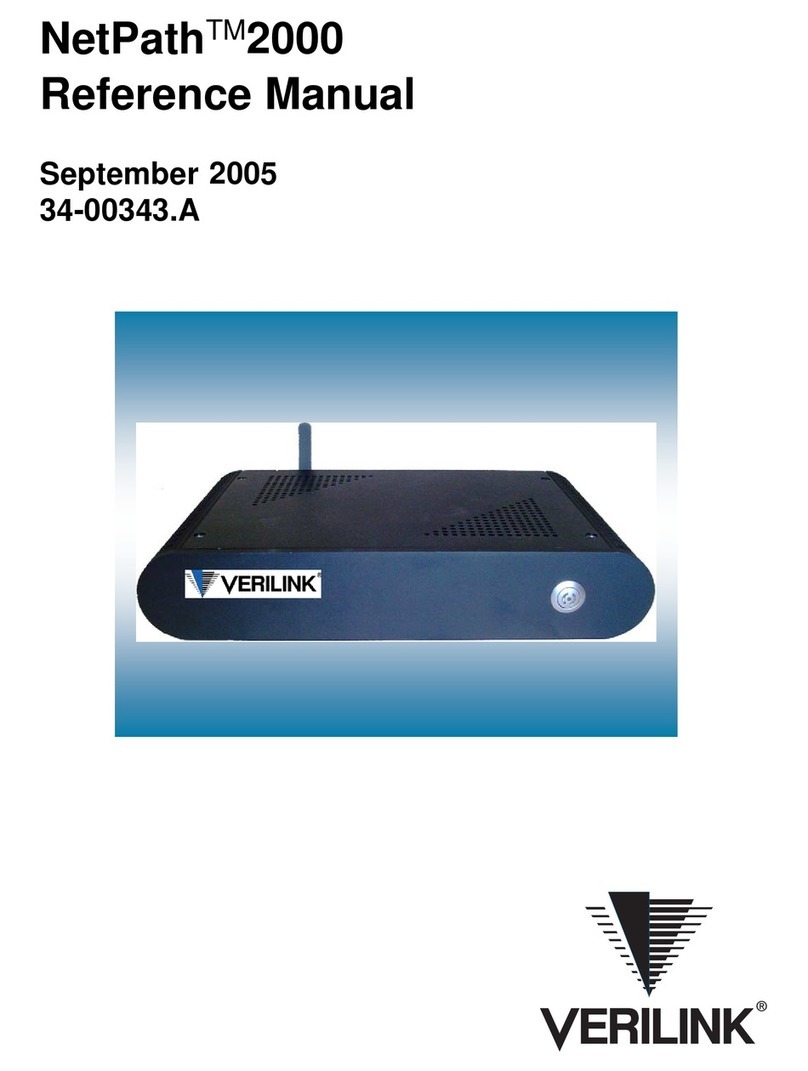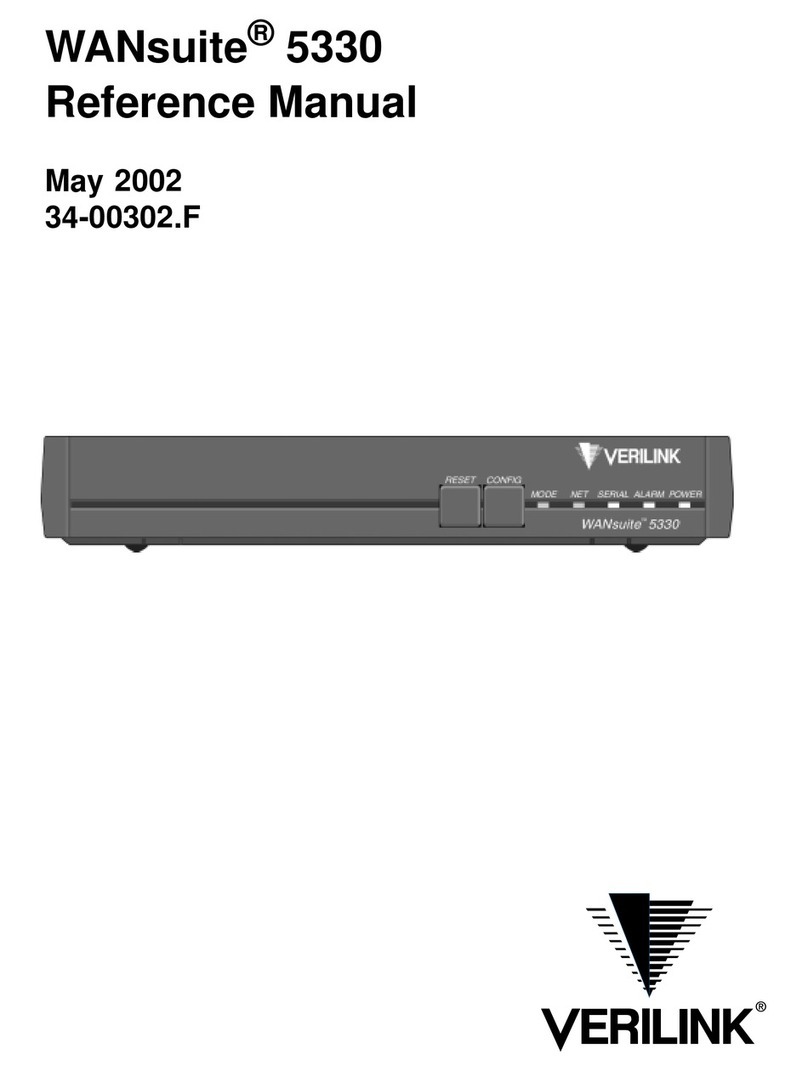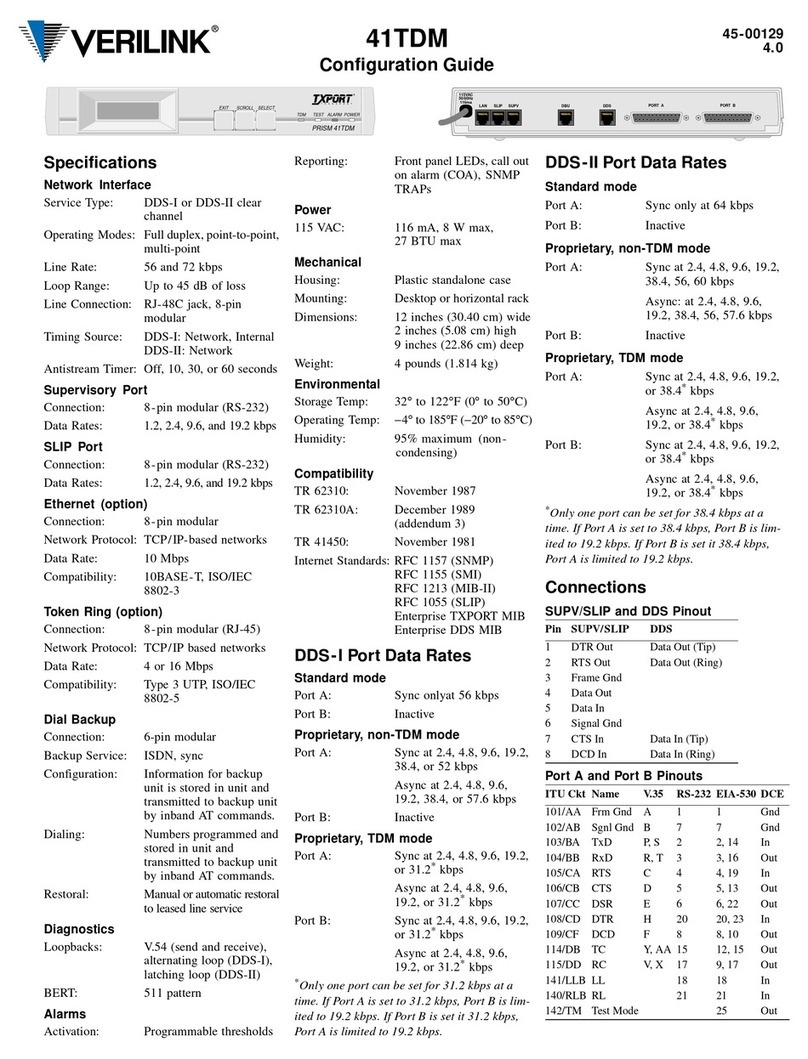
vi T1 Access Router
Chapter 3 Web Server Interface
Web Server Access ............................................................................................................................. 3-1
Layout of Interface Screens ......................................................................................................... 3-2
Unit Screen ......................................................................................................................................... 3-2
Interfaces ............................................................................................................................................. 3-5
Network ........................................................................................................................................ 3-5
Error Status and Alarm Thresholds Table .............................................................................3-7
Performance Screens .................................................................................................................... 3-8
10/100 Ethernet (IP Service Details Screen) ..............................................................................3-10
Supervisory ................................................................................................................................ 3-13
Services ............................................................................................................................................. 3-14
Adding a Service .................................................................................................................3-14
Service Details Screen ................................................................................................................ 3-14
Interface Details Button .......................................................................................................3-15
Type Details Button ............................................................................................................. 3-16
Delete Service Button ..........................................................................................................3-16
Channel Table Details Screen .................................................................................................... 3-16
Frame Relay Service Details Screen .......................................................................................... 3-17
PPP Service Details Screen ........................................................................................................3-23
Parameters To Negotiate ..................................................................................................... 3-25
PPP Statistics ....................................................................................................................... 3-26
PAP Table ............................................................................................................................ 3-27
CHAP Table ........................................................................................................................ 3-28
IP Service Details Screen ........................................................................................................... 3-29
Applications ...................................................................................................................................... 3-29
Endpoint Table ........................................................................................................................... 3-29
Endpoint Details Screen ......................................................................................................3-30
Endpoint Service Details Screen ......................................................................................... 3-33
DLCI Details Screen ............................................................................................................3-33
Service Aware ............................................................................................................................ 3-38
Rule Details Screen ............................................................................................................. 3-39
Traffic Meter Statistics Screen ............................................................................................ 3-41
SNMP ......................................................................................................................................... 3-42
Diagnostics ................................................................................................................................. 3-43
Test Details Screen ..............................................................................................................3-44
Trap Log .....................................................................................................................................3-46
Top Talkers ................................................................................................................................ 3-46
IP Gateway ................................................................................................................................. 3-48
RIP Parameters .................................................................................................................... 3-49
OSPF Parameters .................................................................................................................3-49
Circuit Table Screen ............................................................................................................ 3-49
Static Routes Screen ............................................................................................................ 3-52
Static ARP Table Screen ..................................................................................................... 3-54
Trusted Neighbor Table Screen ........................................................................................... 3-56
Area Table Screen ...............................................................................................................3-57
Virtual Link Table Screen ................................................................................................... 3-59
TCP Server ................................................................................................................................. 3-60
TCP Server Details Screen .................................................................................................. 3-60






























